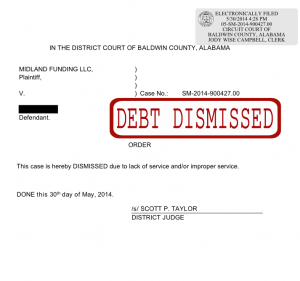Private Mortgage Insurance (PMI, as it is affectionately abbreviated) is one of the many features of the “new” housing market. For those of you who don’t know, PMI is basically an additional fee that is charged to a borrower who cannot afford to make a 10% or 20% down payment on a home. PMI usually adds a couple hundred dollars to your monthly mortgage payment, and you don’t get anything in return for the money. It exists entirely to compensate the bank for the risk of lending to you. Needless to say, it’s a bad deal and you should avoid it if you can. If you already have a loan with PMI, you need to cancel it as soon as possible.
First, a brief summary of what private mortgage insurance is. The idea is this: traditionally (like 30 years ago), you couldn’t get a mortgage without coming up with 20% of the purchase price of your home. But even though most people can’t afford a 20% down payment, banks still want the assurance of having a 20% equity cushion to protect their investment in your home. At the same time, they don’t want to turn away the millions of borrowers who want to buy houses with less than 20% down payments. So here’s the solution: they charge you extra for the privilege of borrowing without having 20% down.
I really have no idea why it is called “private,” but I do agree that in a way, it is “insurance” that you won’t default on your loan. Or rather, it is insurance that of the thousands of PMI-burdened loans in a given lender’s portfolio, only a few will default before the bank gets its 20% equity cushion, and therefore the millions of payments made by the majority of the borrowers will more than compensate the banks for the risks they took issuing the loans in the first place.
As much as the banks would love to stick you with 20 years of PMI premiums, there is a law that was passed in 1998 (Clinton was president, and Britney Spears came out with (Hit me)”…Baby One More Time“) that prevents them from doing that. Once you have racked up enough equity in your home so that the balance of the mortgage is 78% of the original value of the property, the bank MUST cancel the PMI. This will cause your mortgage payment to go down a significant amount. But here’s the kicker: at 80% of the original value, you can write the bank a letter requesting that they cancel it, and they have to do so. On the average 30 year mortgage loan in Alabama, that means that if you don’t notify the lender that you want PMI to stop, there will be about 9 months where you’re paying about $150 more than you have to! That is as crazy as it sounds.
So here’s how to avoid it.
1. Calculate the 80% threshold you need to cross. You do this by using the appraised value of the home at the time you got the loan. If home prices have gone down, that is the bank’s problem, not yours. They are not entitled to a permanent equity cushion. So if you bought a $200,000 home in 2004 and borrowed $175,000, then you can cancel PMI once your unpaid principal balance is $160,000. It doesn’t matter if the home is now worth $100,000 or $500,000.
2. Look at your amortization schedule and mark the date that you’re expected to cross that threshold. Be sure to keep track of any overpayments. If you’re prepaying $100 per month, then you’ll get there before the amortization schedule says so.
3. Write the bank a letter the day you cross the line. It doesn’t have to be fancy lawyer stuff. Just say: my principal balance is now less than 80% of the original value of the property, and therefore I demand that you cancel all Private Mortgage Insurance related to this loan.
4. Enjoy saving hundreds of dollars. Once you’ve notified them of your request to cancel PMI, you have no further responsibility to pay PMI.
5. Make sure they respect your request. Sometimes mortgage companies “lose” paperwork or just ignore your requests. If the mortgage servicer continues to charge you for PMI, they are breaking the law. Write a second letter disputing any PMI charges or late fees that may have resulted from their failure to treat your non-PMI payment as an incomplete payment. Also dispute their reporting of the incomplete payment on your credit report. If they don’t fix it, call a lawyer.
OK, sometimes it can be slightly more difficult. The mortgage servicer can request that you provide proof that the property has not declined in value. This usually means some sort of written valuation report, like a tax assessment, an appraisal, or a Broker Price Opinion from a realtor. If you have to hire an appraiser, let them know beforehand the purpose of the appraisal. Your goal is to show that the property has not declined in value, so you want an appraisal that shows that the property has kept its value or even appreciated.


















